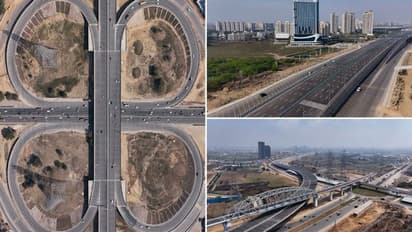Dwarka Expressway opens today; Key features you should know
Published : Mar 11, 2024, 10:41 AM IST
Prime Minister Narendra Modi will inaugurate and lay the foundation stone of 112 National Highway projects across the country worth about Rs one lakh crore during his visit to Gurugram, Haryana on March 11. Take a look at key features of landmark Dwarka Expressway.
Stay updated with the Breaking News Today and Latest News from across India and around the world. Get real-time updates, in-depth analysis, and comprehensive coverage of India News, World News, Indian Defence News, Kerala News, and Karnataka News. From politics to current affairs, follow every major story as it unfolds. Get real-time updates from IMD on major cities weather forecasts, including Rain alerts, Cyclone warnings, and temperature trends. Download the Asianet News Official App from the Android Play Store and iPhone App Store for accurate and timely news updates anytime, anywhere.
